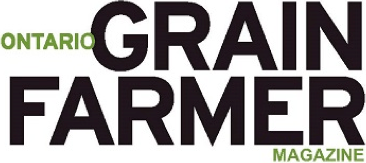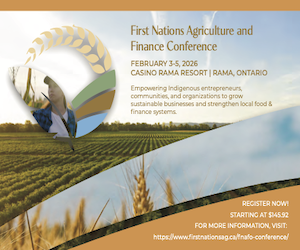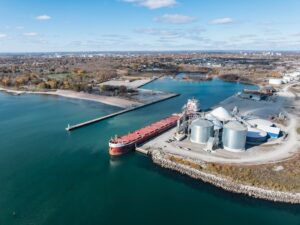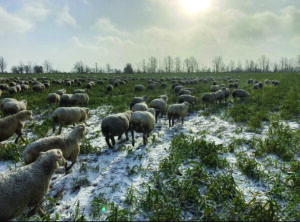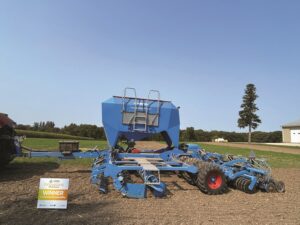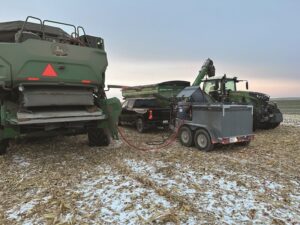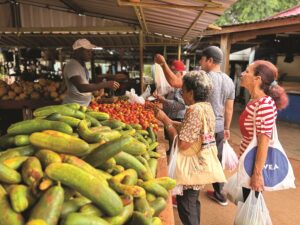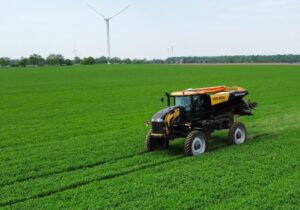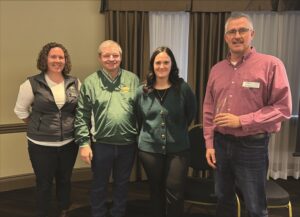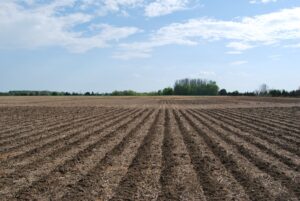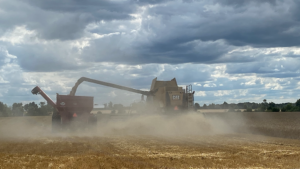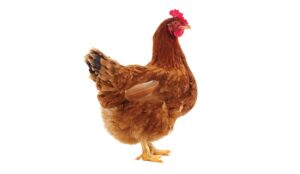The future of glyphosate: cloudy or clear
Farmers in Canada are waiting for the fallout of legal battles in the U.S.
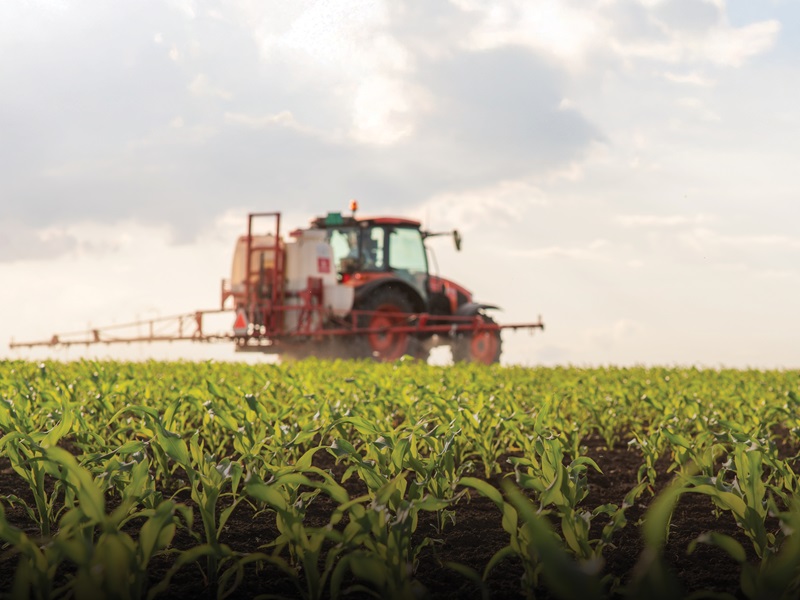
Most days, farming is challenged by weather conditions, cost of production issues, and market volatility. But in 2025, North American growers are watching and waiting as the future of a reliable, reasonably-priced and long-trusted tool is being decided, without their input—and some might say without their consideration.
It’s been nearly 30 years since Roundup Ready soybeans entered North America’s agricultural landscape, becoming the leading herbicide-tolerant technology, which was also adapted to corn, canola, alfalfa, sugar beets, and cotton. The cost-effectiveness and simplicity of Roundup’s active ingredient (glyphosate) and its control of broadleaf species drove its popularity.
Bayer is one of several companies that manufacture glyphosate, but perhaps the most well-known, having acquired Monsanto, including Roundup and Roundup Ready technologies, in 2018.
A 2018 legal battle against Roundup has escalated to hundreds of thousands, with cost estimates in the billions of dollars. But behind the legal action and the assertions by those opposed to pesticides and transgenics is a disturbing level of distrust towards science and empirical evidence.
And somehow, farmers—in the U.S. and Canada—find themselves pushed to the side while being affected directly by the pending outcome.
A BRIEF MOMENT IN TIME
The history of action against Bayer is short, compared to the years of usage that glyphosate has had. But it is the ferocity of opposition to something that has been so heavily relied upon, and has had societal benefits, that can be so shocking. According to a June 6, 2025, update from the U.S. Lawsuit Information Center, a website dedicated to linking complainants with legal representatives, Bayer faced 100,000 legal challenges, most of them from those suffering from non-Hodgkin lymphoma (NHL).
However, that installment is one of several:
March 7: a story in Reuters cited a threat by Bayer that it could stop selling Roundup in the U.S, repeating a commonly-cited line that there were “67,000 further cases pending for which (Bayer) has set aside $5.9 billion in legal provisions” and that the company “would internally separate the glyphosate business from the rest of the Crop Protection division”.
March 25: a report from Dow Jones Morningstar noted Bayer’s share price dropped by seven per cent after a $2.1 billion ruling by a jury in Georgia.
March 26: AgWeb’s Tyne Morgan wrote of five American farmers taking part in the confirmation hearings to appoint Robert Kennedy Jr. as HHS Secretary. The feedback from the growers was positive, but any loss in American-based production of glyphosate would require farmers to purchase their product from China or India.
April 7: Bayer issued its own news release about a writ with the U.S. Supreme Court to review lawsuits against the use of Roundup. The release cited security and affordability of the food supply, depending on innovative agricultural tools like Roundup.
April 21: In a contribution to Post Media, Dr. Sylvain Charlebois from Dalhousie University echoed Bayer’s threat that it might halt production of glyphosate. However, he oversimplified the notion of creating a “replacement for glyphosate that is both effective and aligned with societal expectations,” ignoring the necessary years of research and development, testing and regulatory requirements and the investment of hundreds of millions of dollars.
May 13: From another company news release, Bayer pledged to stop manufacturing generic products in Germany. It recognized the production of generic crop protection products in Asia, and its overcapacity in recent years has resulted in lower prices, some of which are below the cost of production for products in Europe.
May 19: A story from news service Axios provided a back-and-forth breakdown of Robert Kennedy Jr.’s anticipated ‘Make America Healthy Again’ (MAHA) report, detailing the products he could be banning, including glyphosate. The report mentioned that glyphosate is still used in Europe but that atrazine is banned there and could be on Kennedy’s targeted list.
May 20: The Wall Street Journal reported that Bayer was considering placing its Monsanto division into bankruptcy as a means of resolving lawsuits against Roundup.
In addition to the U.S.-based legal challenges, a class action lawsuit was certified against Bayer in Canada in April 2025. The lawsuit seeks financial compensation for individuals who developed NHL following significant exposure to the herbicide. The merits of the case are yet to be proven in court, with Bayer denying the claim. While this lawsuit adds to Bayer’s legal challenges, it is important to note that there is currently no regulatory or political activity that would impact Canadian farmers’ access to glyphosate at this time.
A POSITIVE TAKE
Two papers from the U.S. National Corn Growers Association (NCGA), posted May 21 and 28, refuted the MAHA Report claims, detailing what growers and society in general stand to lose if glyphosate is banned. Yields could drop up to 70 per cent alongside increases in soil erosion, greater water use for irrigation, and the additional release of carbon from the four to five tillage passes per acre needed to manage weeds.
For Dale Cowan, it’s a combination of glyphosate’s long-term simplicity and its environmental benefits that are under threat with any proposed ban. It’s one of the few chemistries that worked no matter the weather, and to a large degree, it’s been the most influential practice in the development of a no-till environment.
“It certainly cleaned up a lot of perennial weed problems,” says Cowan, senior agronomist with Agris Co-op. He recalls the days when milkweed was an issue in fields. “We got rid of all those, and it’s changed farming completely, driving out a lot of tillage cost and a lot of fuel cost.”
He acknowledges the decline in the trust of science, noting that “lab coats and lawyers” dealings seldom work in favour of those wearing lab coats, but that the nature of science is one of discovery and understanding the natural world. It’s possible that in the development of a product, not every facet is explored or tested, because it may not have been the scope of the project.
“It’s a little disappointing for me that science is under attack,” adds Cowan. “It just seems that anyone with an opinion can air it, and then opinions get interpreted as facts. Then people gather to a point of view, and you can have two sides to every issue, but then we stop talking, and I don’t know where we win on that one.”
HOW TO DEFINE ‘BETTER’
The clarity on “winning” is lost on a lot of industry partners, especially when considering the metrics involved in defining the win. Dr. François Tardif believes, as Cowan does, that it is one thing to ban glyphosate and default to alternative measures; however, without understanding the science of weed management, it’s shortsighted to promote any of those alternatives.
The farming community understands, or at least is aware of, the benefits to farmers, including weed management, increased yields, and the simplicity of one or two applications of a herbicide. Yet the average consumer only sees the advantages to the farmer, not the societal benefits that result.
“You could make scenarios where yes, losing glyphosate would cause food security issues or affect supply, and people would say, ‘Well, there are alternatives’,” says Tardif, professor of weed science at the University of Guelph. “The consequences of those alternatives are that you may get more active ingredients instead of glyphosate in the system, and you may get less effective weed control or less yield, which may have an impact on price. And that’s been modelled elsewhere in the world.”
Studies in Europe and Australia have examined the impact of banning glyphosate. Work in horticulture crops, orchards, and field crops has found that weeds could be controlled without glyphosate, but the cost of food would increase, and it might mean more applications required with more herbicide actives being mixed.
NOT ONE AND DONE
The current state of the situation is a huge concern for everyone in agriculture, including producers, retailers, agronomists, researchers, and manufacturers. As Pierre Petelle notes, glyphosate is one of the most studied products in the world, and there isn’t a single regulator, including anywhere in Europe, that has deemed glyphosate as carcinogenic when used according to label instructions. But it is not as though activists and their legal representatives will be content with banning glyphosate; it’s the first on their list, not the last.
“Glyphosate has been their holy grail for many years, just because of how widespread and how significant it is, globally,” says Petelle, president and CEO with CropLife Canada. “But make no mistake: the activist groups’ short form is ‘pesticides’, not ‘glyphosate’ or ‘2,4-D’. They use ‘pesticides’, which encompasses all of the products as their target. This is not one product, and we can move on with other alternatives.”
Petelle points to what has happened in Europe, where pesticide approvals are much more political, where member states appease activists, and the activists only demand more and more.
“Canada is a small market—between three and four per cent of the global pesticide market,” he adds. “But I think our reputation is significant and it’s important that we make sure our decision- making stays science-based, that it doesn’t get politically motivated or change with whoever’s in power, so Canada’s influence can be exerted a bit, globally.” •
